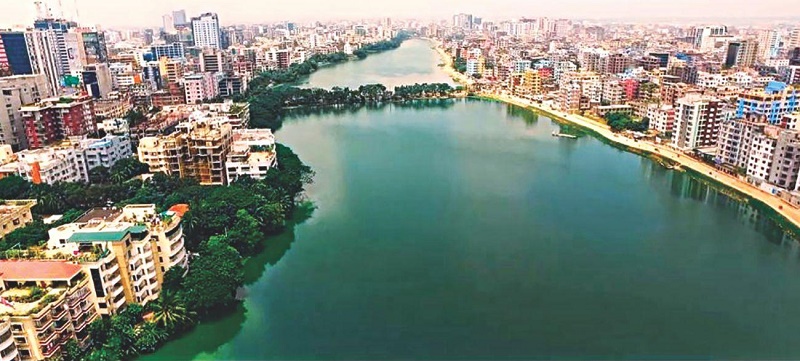
Top Visiting Places in Dhaka CityPosted by FLATOUE JENNY on February 26th, 2019 Top Visiting Places in Dhaka City Dhaka, the capital city of Bangladesh, is a thriving, delightful and overcrowded metropolis of about Page Contents Once the official residential palace of the Nawabs of Dhaka, now Ahsan Manzil or the Pink Palace is a museum and one of the most visited places in Dhaka. The 5.5 acre premise of this palace bears the significance as an architectural reminder of the elite life of the Nawabs of Dhaka during the colonial era of 19th and early 20th century. In 1872, the patriarch of the Nawab family, Abdul Ghani (1813-1896), constructed the family’s official residence on the bank of the River Buriganga in old Dhaka and named the palace after his son Nawab Khwaja Ahsanullah (1846-1901). It’s mostly European styled building mixed with some decorative Indian motifs. Its soaring dome appears to be more about impressing the viewer on the exterior, rather than within the interior. Many important persons of the Colonial period either visited or stayed here. Viceroy Lord Nathaniel Curzon was one of them. He stayed here as a guest of Nawab Salimullah Bahadur in 1904. In 1906 Muslim leaders from all over India congregated at the Durbar Hall of Ahsan Manzil for the 20th Session of the All India Mohammedan Educational Conference in Dhaka. In the same year here the All India Muslim League was formed that later lead the creation of Pakistan-when the British left the Indian subcontinent in 1947. 16 years after its erection, it was damaged by a cyclone. After its reconstruction, the palace became grander than before. After the death of the nawab and his son, the family fortune was dispersed and the palace eventually fell into disrepair. As the influence and the prestige of the Nawabs declined in the 20th century and the descendants of the Nawabs became too poor to look after such a vast property, The then Government took over this palace in 1952. However, the poor descendants of the Nawab family and the poor local people, continued to hold the palace until the 1970s. They inflicted much harm to the building by indiscriminately altering its configuration. In 1985 the Government of acquired the property and after much deliberation decided to convert it into a national museum. The preservation work completed in 1989 and Ahsan Manzil started it’s journey as a museum in 1992. This 17th century incomplete Mughal fort is the most popular and renowned one and bears a great significance of art by Mughal Empire in Bangladesh. It stands proudly before the Buriganga River in the southwestern part of the old city. In 1678 a Mughal prince Muhammad Azam started the fort’s construction work during his vice royalty in Bangladesh. But the construction work remained incomplete when he was called back by his father Aurangazeb to the capital Delhi. His son Shaista Khan did not complete the fort though he stayed here up to 1688. In 1684 his daughter Pari Bibi died. After her death, he started thinking the fort ominous and left the structure incomplete. There are several structures in the fort area: More : https://tourrom.com/asia/bangladesh/dhaka/Like it? Share it!More by this author |


